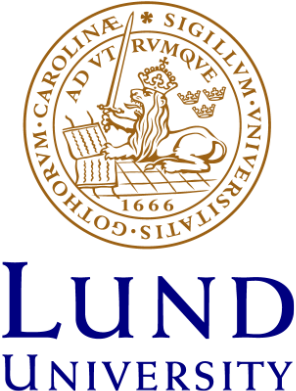Search results
Filter
Filetype
Your search for "*" yielded 531489 hits
Review of Epistemic Luck
Beta-amyloid, tau-protein and cystatin C in the pathophysiology of Alzheimer´s disease
Alzheimer´s Disease (AD) is a progressive neurodegenerative dementia characterized by the extracellular accumulation of the beta-amyloid (Ab) peptide into plaques and intracellular phosphorylation and accumulation of tau protein into neurofibrillary tangles (NFT). Inflammation due to astrocytic and microglial activation is one of the ongoing processes in the disease giving rise to cytokine product
Näringsrikt om gossen Ruda
Recension av den danska filmvetenskapliga årsboken Sekvens.
Numerical Simulations of Turbulent Flows at Widely Different Mach Numbers
The present thesis mainly focuses on the numerical simulation of the turbulent flow field and acoustics developed in different industrial applications. The study covers a large range of Mach numbers, starting from incompressible regimes and ending with a fully compressible flow. In the first part of the thesis, several computations of an incompressible flow, are performed in order to study the be
Antibiotics differ in their tendency to cause infusion phlebitis: a prospective observational study.
Intravenous administration of antibiotics is a known risk factor for infusion phlebitis. We have previously demonstrated differences in cell toxicity for 4 antibiotics. Clinical experience indicates that antibiotics differ in their tendency to cause phlebitis. The present study was done prospectively on 550 patients with 1386 peripheral venous catheters. The incidence of phlebitis was 18.5% with a
Measuring cancer prevalence in Europe: the EUROPREVAL project
Cancer prevalence is the proportion of individuals in a population who at some stage during their lifetime have been diagnosed with cancer, irrespective of the date of diagnosis. Cancer prevalence statistics have generally been provided by a limited number of well established cancer registries that have been in existence for several decades. The advent of systematic follow-up of life status of inc
Lewis phenotype of erythrocytes and Leb-active glycolipid in serum of pregnant women
In an attempt to provide an explanation for the previously reported effect of pregnancy on the Lewis phenotype of erythrocytes, the level of Leb-active glycolipid in serum was compared with the reactions of erythrocytes, using samples obtained from 73 nonpregnant women, 74 women at the time of delivery, and 2 women at weekly intervals during their pregnancy. In this Swedish population, the frequen
Effect of interfering substances on current response of recombinant peroxidase and glucose oxidase-recombinant peroxidase modified graphite electrodes
Graphite electrodes have been modified with different forms of horseradish peroxidase (HRP). These included native HRP, wild-type recombinant HRP, and two single-point recombinant HRP mutants, N70V and N70D. The mediator-less response of these electrodes to H2O2 was studied indicating that electrodes modified with recombinant HRP forms are more stable than those modified with native HRP. Various i
From fused toes in mice to human obesity
Pragmatism, neo-pragmatism and sociocultural theory: communicative participation as a perspective in LIS
Activity Report: Automatic Control 1995-1996
Group A streptococcus bacteraemia complicated by osteomyelitis in an immunocompetent adult.
Neuroprotective effects of nitric oxide synthase inhibitors in spinal cord injury-induced pathophysiology and motor functions: An experimental study in the rat.
The role of nitric oxide (NO) in spinal cord injury (SCI)-induced motor dysfunction, breakdown of the blood-spinal cord barrier (BSCB), edema formation, and cell injury was examined using a pharmacological approach. We used three types of nitric oxide synthase (NOS) inhibitors: a nonselective blocker, L-NAME; an irreversible inhibitor of all isoforms of NOS, L-NMMA; and a long-term competitive inh
Ku protein and DNA strand breaks in lip glands of normal and primary Sjogren's syndrome subjects: Lack of correlation with apoptosis
The aim was to examine tissue expression of Ku protein in lower lip salivary gland (LSG) biopsies from cases of primary Sjogren's syndrome (SS) and from normal subjects. Methods: immunohistochemistry was used with antibodies to Ku70/86 and also Ki67, PCNA and p53. In addition, the Klenow method was applied in order to detect evidence of apoptosis. Sections of hyperplastic tonsil served as addition
String effects on Fermi-Dirac correlation measurements
We investigate some recent measurements of Fermi-Dirac correlations by the LEP collaborations indicating surprisingly small source radii for the production of baryons in e(+)e(-) annihilation at the Z(0) peak. In hadronization models there is besides the Fermi-Dirac correlation effect also a strong dynamical (anti-) correlation. We demonstrate that the extraction of the pure FD effect is highly de
Policyspridning som översättning: En fallstudie av svensk metadonbehandling mot heroinnarkomani
Riskfyllt doftande II: Fler blir allergiska mot parfymämnen
Realignment and surgical fixation of atlanto-axial and subaxial dislocations in rheumatoid arthritis (RA) patients
One hundred consecutive patients with atlanto-axial dislocation(s) were subjected to posterior occipito-cervical fusion and followed up to 16 1/2 years postoperatively (mean: 4 1/2 years). The mean age at surgery was 60.3 years. At the time of follow-up, 45 patients had died, mostly due to cardiopulmonary disease. Out of the 100 patients, 67% showed a major improvement and in an additional 14% the
Growth or reproduction? Resource allocation by female frogs Rana temporaria
The decision how to allocate marginal resources to reproduction and growth can have important effects on associated life-history parameters as well as on population dynamics. In addition to showing variation among individuals in a population, such allocation rules may be either condition-dependent or fixed in different individuals. While many studies on anuran amphibians have focused on egg number
